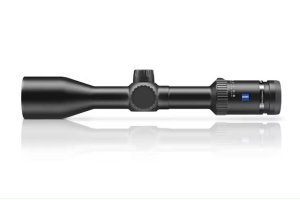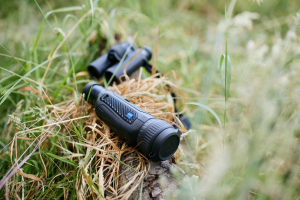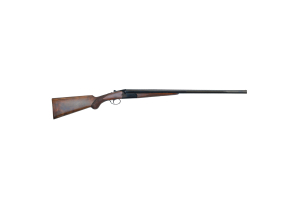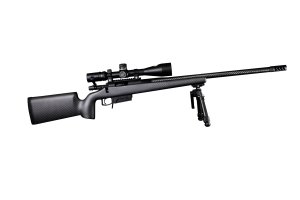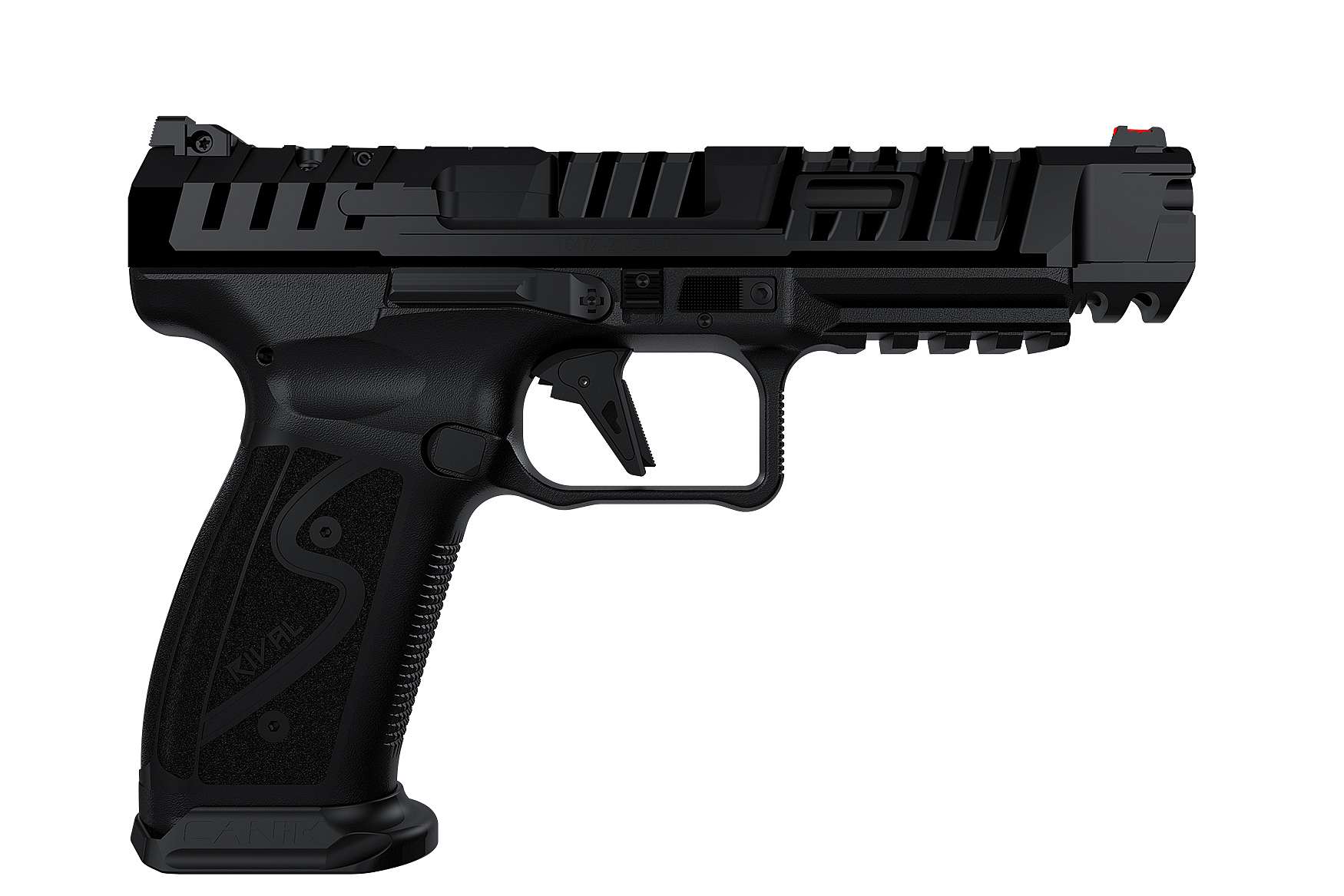
PRODUCT REVIEW - Canik SFX Rival-S
Canik Steel-frame Rival already looks a winner, says Rod Pascoe
Turkish manufacturer Canik has been a major player in the aerospace industry for some time with a reputation for precision engineering and, in 2009, the company spread its wings and added firearms to its portfolio with models catering mainly to military, home and personal protection applications. Inspired by developing trends in the industry and market success of the Glock with its polymer frame, striker-fired mechanism and multiple inbuilt safeties, Canik expanded its product line-up, offering more options especially to one of the largest segments of the firearms industry, the concealed-carry market in the US. Then in 2020 Canik introduced the polymer-framed Rival catering to the sporting handgun market producing a pistol with a full-sized frame, adjustable sights, loads of accessories and one which conformed to the rulebooks of most action/practical forms of target shooting.
The Rival is just one in a range of handguns in Canik’s catalogue but is the one with the ‘look’ of a competition pistol and took the prestigious Handgun of the Year title in 2022. Released at SHOT Show that year, the new SFx Rival-S builds on the polymer-framed version and retains all proven design features while adding weight. Outdoor Sporting Agencies (OSA) is Australian distributor for Canik and gave Australian Shooter the chance to put the Rival-S Black through its paces.
What’s in the box?
The pelican-style range case is a great improvement on the earlier version but contains much the same equipment and accessories as its predecessor, though in a spacious two-layered arrangement including all the goodies a new shooter needs to get started.
Opening the case reveals the foam-lined tray which includes the pistol itself, two extra magazines, two extra grip sizes for a choice of small, medium or large, a competitionstyle mag well and the ‘baby Canik’ tool. An accessory kit contains other bits and pieces such as spare yellow and red optic fibres for the front sight, a medium and large magazine release button and an assortment of screws, washers and Torx bits that fit into the ‘muzzle’ of the little pistol which itself acts as a hex wrench.
Finally there’s a bar which screws into the side of the reflex sight adaptor plates to become a cocking lever, giving the shooter something other than the sight itself with which to rack the slide - neat! Each accessory item has its own spot and in the lower section is a nylon cleaning brush and rod, magazine loading tool and array of optical sight adaptor plates to accommodate a variety of reflex dot sights.
An item not generally included with pistols is a punch to allow disassembly of parts with ease, Canik’s way of letting the owner fix or make changes which might otherwise require a gunsmith. To complete the accessories is a black plastic holster with basket weave texture. The competition-style holster conforms to IPSC Production specifications and is good enough for the beginner before graduating to a full professional rig. In the lid of the case is an owner’s manual and disassembly instructions.
First impressions
At 1.2kg the obvious difference to the polymer-framed Rival is the feel when you pick it up, the full-sized steel-forged frame providing extra weight which makes for a well-balanced and stable pistol. Physically the gun appears identical (apart from the grip inserts) to the polymer-framed version I reviewed here in April 2022. Texture to the front of the grip has been updated to deep chequering into the steel frame, while the rear of the trigger guard is undercut and helps the hand sit higher on the grip.
Instead of replaceable backstraps the new model has three one-piece wraparound polymer grips incorporating both side panels and backstrap, with a sand paper-like texture to further increase grip. There’s a four-slot Picatinny accessory rail under the frame which is becoming pretty much standard on many pistols.
With the Glock patents having expired, Canik borrowed design and engineering features from some well-established gunmakers and one of the earlier models, the TP9, takes its inspiration from the Walther P99 of the 1990s, while the Rival and Rival-S also carry features seen on the Walther Q5 polymer and steel-framed match pistols. The long-slide stop lever is one such borrowed design and is duplicated on the right side of the frame.
The square magazine release catch can be repositioned to the other side and the accessory tool box gives a choice of three magazine release button sizes. The magazine and slide releases feel accessible in the hand with the medium grip fitted, while forward of the take-down release is a new Rival feature, a slot for an optional thumb rest. The addition of a mag-well helps with faster reload and can be removed if the rulebook dictates for certain categories or divisions of competitions. With the magwell removed the end of the butt incorporates a ‘self mag-well’ internally shaped to improve magazine loading.
Canik, along with dozens of manufacturers worldwide, have benefited from almost 40 years of improvement on the revolutionary Glock system and as such, trigger mechanisms have been top of their R&D list. I’ve tried all triggers across the range of Canik striker-fired pistols and all are a vast improvement on Glock’s original.
The diamond-cut surface of the 90-degree aluminium flat trigger helps prevent slippage and improved control, while the reduction in trigger weight with a short up-take and short reset felt pretty smooth when dry firing and, according to the advertising material, the firing mechanism is an improved version. The take-down process for removing the slide is a little different to most striker-fired pistols and instructions for stripping are in the manual and must be observed to avoid damaging the firing mechanism. Deep, aggressive serrations extend around the front of the slide, with a long cut on top and short one on each side helping with weight distribution and appearance. I prefer to rack pistol slides from in front of the ejection port, a habit that comes from not wanting to rub off the carbide sight-black. Along with the step in the slide just behind the front sight, these serrations give plenty of opportunity for a firm hold. Both the polymer and steel models sport an adjustable sight and shows designers of the Rivals have the sports shooter in mind and, in keeping with modern trends, they’re optics-ready.
Once the rear sight is removed, one of five supplied adaptor plates accommodate most popular brands of reflex red-dot sights. One of the adaptor plates even incorporates a fixed sight, again something that may be required in a certain match.
The rear of the slide exposes the back of the firing pin and, coloured red, alerts the shooter to when the striker is cocked. The five-inch (127mm) barrel is fluted which, apart from its appearance, reduces the amount of contact between barrel and slide. The breech end of the barrel also has serrations to match those on the front and rear of the slide, while the flat recoil spiring is captive on a square steel guide rod.
OSA also provided the latest SIG/Sauer Romeo-1 Pro reflex sight for this review. The Romeo series are top of the reflex sight range with SIG’s reputation for quality and reliability. With its strong and lightweight housing and 30mm moulded glass aspherical lens, Romeo 1 is described as a miniature dot sight though I found it large enough for most applications on several pistols.
Although the sight is supplied with a steel shroud, the screws weren’t long enough to mount on the Rival’s adaptor plate (easily fixed with longer screws). This optic has a 6 Minute of Angle (MOA) red dot with a 3 MOA also available. The reflex sight has 12 illumination settings and the supplied CR1632 battery with its 20,000 hours-plus life is easily replaced using a top-mounted screw cap. It comes with a handy key chain tool with screwdrivers for battery replacement and sight adjustment as well as a spare battery compartment. Before heading to the range I cleaned and lubricated the Rival as per instructions.
At the range
I chose factory-loaded ammunition across several brands in Winchester, PPU, Geco, Federal and Sellier & Bellot, some 115-grain others 124, some lead roundnose others jacketed either hollow point or FMJ. All functioned without fault in feeding, firing, extracting and ejecting at a high rate of fire and didn’t miss a beat.
There was plenty of adjustment available in the rear sight to cover any windage or elevation variations of the different rounds. The dovetail-mounted red fibre front sight was bright and quick to locate, though I prefer the traditional Patridge-style in some situations and the dovetail allows for an easy fix with aftermarket accessories.
Gripping the Rival was comfortable and sat in the hand nicely. The weight and, importantly balance, made it easy to shoot full-house factory loads as both weight and balance aided its stability so it didn’t jump around, making it easy to bring the gun back on target.
The Rival-S was supplied with the small extension button screwed to the mag release. I removed it to reveal the base button is chequered and easy to locate and operate. It’s handy to remember that if a pistol is staged, loaded with left side down on a table at the start of an IPSC stage, a longer mag release could be bumped as you pick it up.
Accuracy was respectable with all ammo tested and comparable to other pistols of the same design and firing mechanism, though the standout was Winchester Silvertip 124gr Jacketed Hollow-Point. With load development, shooters will quickly settle on one which suits them and the gun. I experimented with my own ammunition, downloaded to the point where it made power factor, yet still allowed the pistol to function normally without having to resort to a lighter set of recoil and striker springs.
As expected and after much development these loads were an improvement on the factory offerings. With my failing eyes, groups were marginally smaller with the Romeo-1 reflex sight as the 6 MOA dot sat neatly inside the X-ring of an Action Pistol target at 25m.
The trigger was smooth with a short, crisp reset and although weighing almost 4lbs it didn’t feel like it. Range sessions weren’t just about accuracy and ammo, as functionality of the pistol in real-life competition situations were important to assess. As such fast reloads were smooth, aided by the mag-well bevel even without the extended mag-well fitted. I tried all three grip sizes and, despite having medium-sized hands, settled on the large after firing several rounds.
While the medium grip felt good at home when it came to shooting, the large was my preference and I’d no problem reaching the controls. Although the holster is competition friendly and complies with the rules, it did bind on a couple of occasions but I found by pulling the pistol directly up without any back or forth pressure, binding didn’t occur.
Summary
I mentioned Canik’s a new player in this industry, attempting to beat off competition in the ever-growing 9mm striker-fired handgun market and they’ve come so far so quickly. Whenever I review such a firearm, I stress there’s a limit to how much manufacturers can cut the cost of producing a gun without compromising function, reliability, accuracy, safety and integrity of their brand. So to be competitive they have to valueadd somehow, which makes it even more difficult for potential buyers to differentiate between brands and even models within a brand. In the case of the Rival and Rival-S,
Canik has value-added with all accessories and attachments mentioned and also have practical and cosmetic embellishments and improved performance to add to their overall appeal. Furthermore, they’ve added three magazines and an adjustable rear sight, indicating the Rival is definitely targeted at a specific market segment - sporting shooters. Canik designers read the rulebooks of various disciplines, with and without optics categories such as IPSC, to make sure the Rival met requirements of the match.
OSA stock a wide range of Canik accessories and spare parts and independent aftermarket suppliers have begun producing enhancements such as grips, sights, compensators, thumb rests, recoil spring guides and extended magazines to enhance the Rival-S and can turn other Canik models into competition guns. The SFx Rival-S will appeal to those after a functional, solid, striker-fired handgun that’s affordable yet has all the attributes for competition shooting. It’s ready to go right out the box. At time of writing I saw some shops advertising retail prices starting around $2100 for the Black model and $2200 for the Chrome.
Published by SSAA
March 2024 Australian Shooter, written by Rod Pascoe

